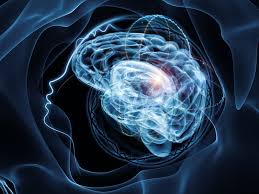The first time I saw the term, I had no clue what it meant, how to pronounce it or what to make of it. After months of watching my happy little tingle videos, seemingly overnight their titles all contained a four letter…something: ASMR. Now, I didn’t know what an ASMR was (read: azzmer) but I avoided the term like the plague. At first I wasn’t sure if the term was used to distinguish the type of video I had been watching with something completely different (like something more sexual in nature.) However when it became so prevalent, I eventually looked it up.
It was then that I learned that Autonomous Sensory Meridian Response (ASMR) was a semi-scientific term to describe a perceptual phenomenon characterized by a tingly feeling that begins in the head or scalp and flows through the body causing it to relax. It was a term that was more or less made up in 2010 by healthcare IT worker Jenn Allen and promptly dismissed by the clinical community as nothing more than “pseudo science with a medical sounding name.”
While it was nice to have an “official” name connected with the sensation, I have to admit, I was a little confused by the lack of knowledge surrounding it. It wasn’t new. I knew that much having experienced it since I was seven, but if it wasn’t new then where was the research to back it up? If it was a type of biofeedback response that was elicited in medical practices as way to help people relax and cope with pain, why was the scientific community so keen to deny it or act like it wasn’t real?
As someone who had worked in the medical field for nearly a decade and continues to write about a variety of medical subjects, this made no sense to me. I couldn’t help wondering if the phenomenon that YouTubers were calling ASMR had another name at some point, one that was recognized by science but no one knew what it was. Was there some fundamental piece of the description missing that would cause some researcher somewhere to say, “Oh, you mean…” and fill in the blank with a well-thought out but obscure Latin term that no one had ever heard of before or was the real problem the fact that people were turning to YouTube to get a good night’s sleep?
I suspected it might be the latter and thus began my quest for answers. In September of 2013, I wrote my first article on ASMR, it was a local piece that simply introduced the phenomenon to those who may not have heard of it before. I began following the social media feeds of several ASMRtists and learned that several of my friends were already familiar with the sensation as well giving us permission to discuss it in the way that only “tingle heads” can.
In the months that followed it became obvious that the ASMR phenomenon was moving more into the mainstream, but I was still irritated by the fact that few reports I saw went beyond “tingle tales” or the connection between ASMR and Bob Ross. I watched well-regarded physicians offer possible explanations for the sensation with a shrug as if they really had no clue as to what was going on and commentators who acted like the whole thing was a big joke. Oh my Lord, people this can’t be that hard, I thought to myself. Someone is going to have to track this thing in and figure out what is going on.
Little did I know that I would become the “someone” who would do it?
Until next time, tingle on,
J-
- “What’s an Azz-Merr?” (ASMR) - January 20, 2016
- Six Triggers On YouTube - January 15, 2016
- Breaking into Biofeedback - January 7, 2016

